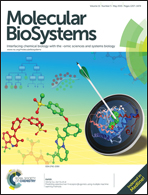Synthetic artificial microRNAs targeting UCA1-MALAT1 or c-Myc inhibit malignant phenotypes of bladder cancer cells T24 and 5637
Abstract
The biggest concern of using natural microRNAs for treating cancer is that they usually cause few phenotypic changes due to the divergent functions of their target genes. Based on the engineering principles of synthetic biology, we provided a standard platform for constructing artificial microRNAs that can target one or few specific genes and silence both protein-coding genes and long non-coding genes. To prove the utility of this platform, we chose MALAT1, UCA1, and c-Myc as the functional targets and used the bladder cancer cell lines T24 and 5637 as the test models. The relative expression level of the target genes was measured by qRT-PCR. Cell proliferation and migration were determined by MTT assay and wound-healing assay, respectively. Cell apoptosis was revealed by both Hoechst 33258 staining assay and ELISA assay. We found that the artificial microRNAs can effectively silence their target genes and induce anti-cancer effects in T24 and 5637 cells. These devices can inhibit proliferation, induce apoptosis, and suppress migration of the two bladder cancer cell lines. The synthetic artificial microRNAs may represent a kind of novel genetic devices for treating human bladder cancer.


 Please wait while we load your content...
Please wait while we load your content...